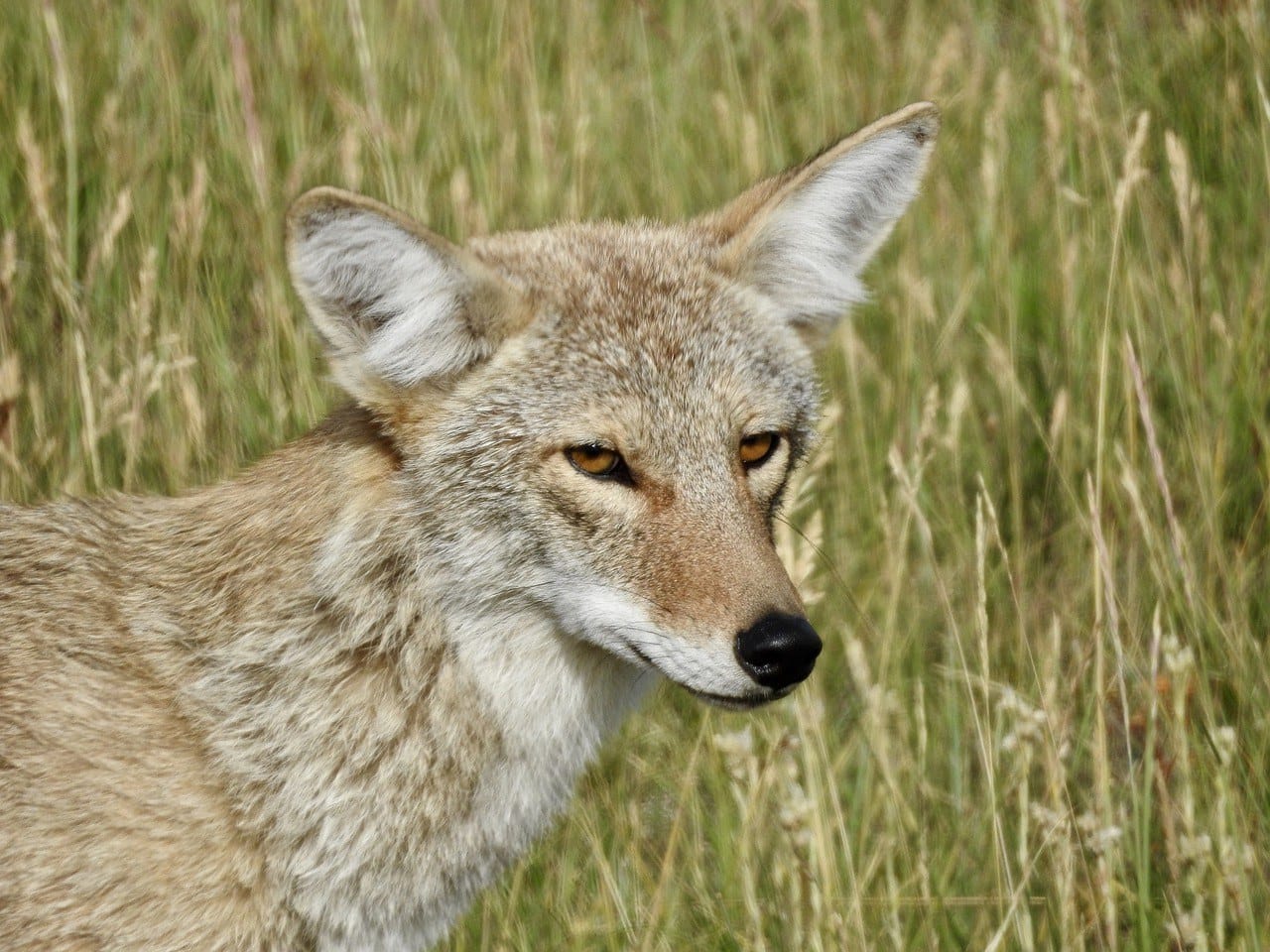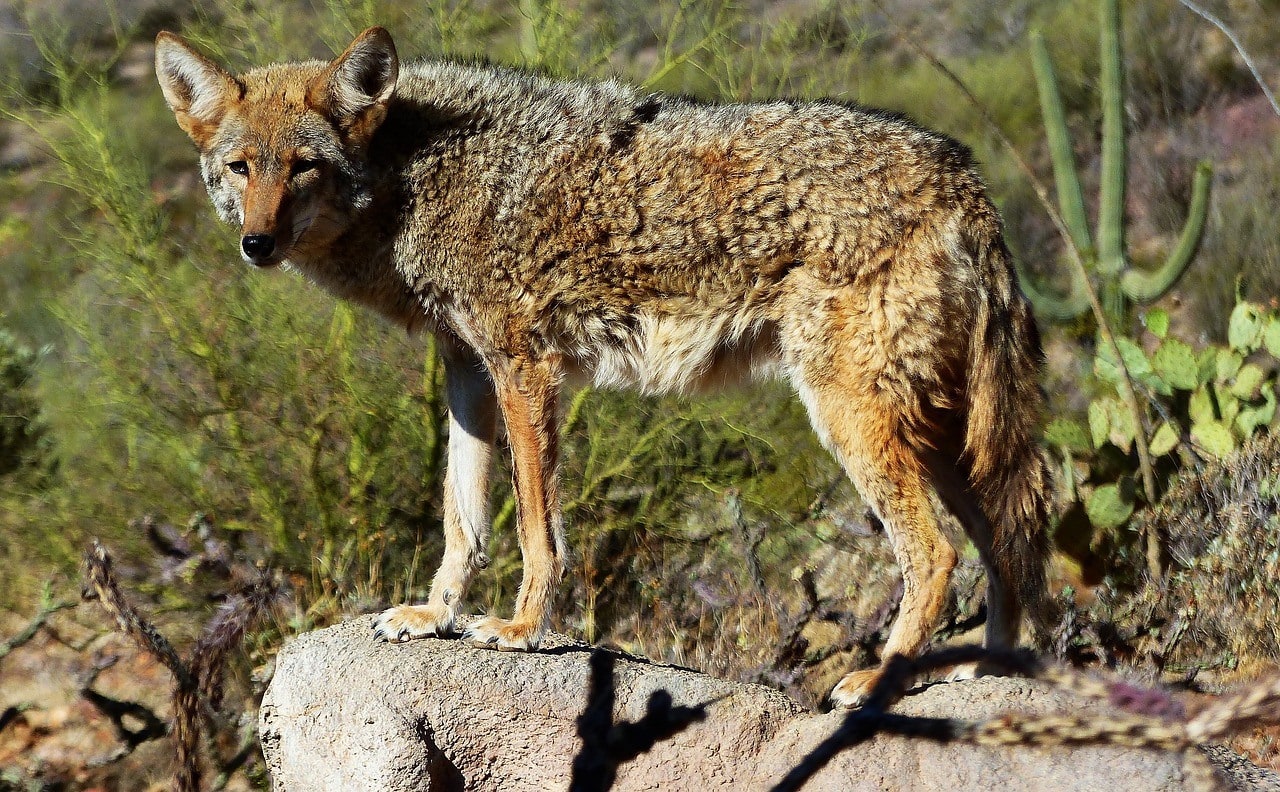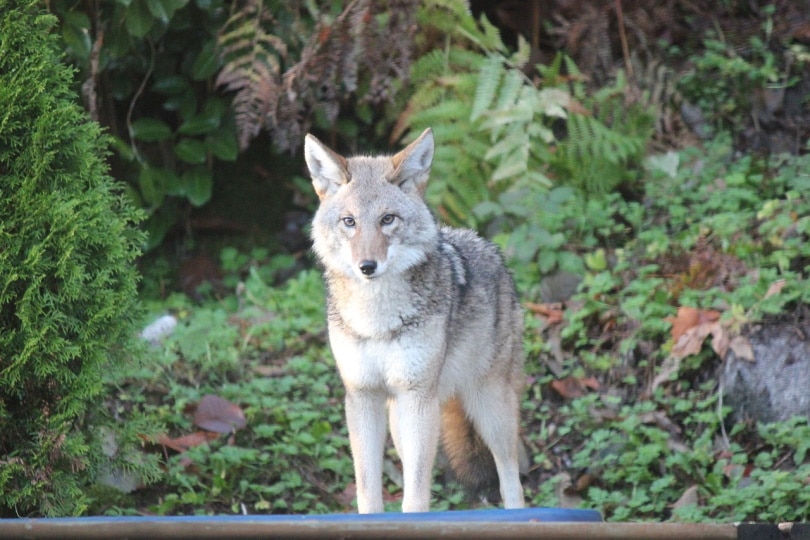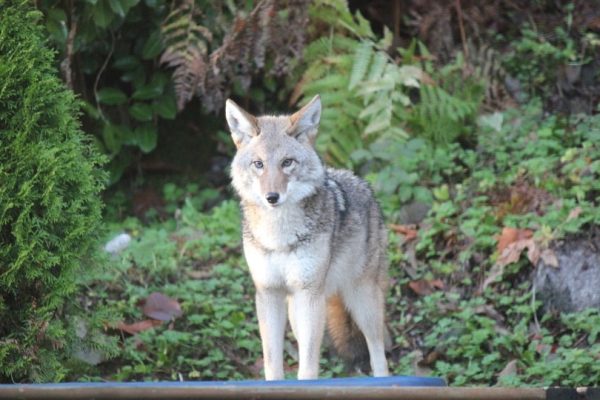To a casual observer, coyotes look like certain dog breeds, and while this does make sense because they are both canines, dogs split from coyotes an estimated 25,000–40,000 years ago. Today, coyotes and dogs are different animals. Coyotes live in the wild where they are not governed by what humans do or think. They live by their own rules and maintain a strict pack mentality that is not easily shattered.
But what about their physical differences? Are coyotes bigger than dogs? The truth is that it depends on the dog. Some dogs are much smaller than coyotes, but others are comparable in size or even larger. Let’s look at a few comparison charts.

Coyote vs Dog: Which Is Bigger?
Small dog breeds like Miniature Poodles are obviously smaller than coyotes, but what about dogs like Rottweilers or Labrador Retrievers? The average coyote weighs between 25 and 35 pounds, and there are quite a few dogs that are larger than that. Even the Basset Hound weighs more than a coyote, averaging between 40 and 65 pounds—though size is a different matter. Here is a comparison chart of the coyote and a variety of dog breeds so you can get an idea of how they stack up to one another:
| Animal | Average Weight | Average Height |
| Coyote | 25–35 pounds | 30–33.5 inches |
| Dachshund | 16–32 pounds | 8–9 inches |
| Greyhound | 60–70 pounds | 27–30 inches |
| Newfoundland | 100- 150 pounds | 25–28 inches |
| Standard Poodle | 40–70 pounds | 18–24 inches |
| Rottweiler | 80–135 pounds | 22–27 inches |
| English Setter | 45–80 pounds | 26–27 inches |
| American Water Spaniel | 25–45 pounds | 15–18 inches |
| Whippet | 25–40 pounds | 18 -22 inches |
| Finnish Spitz | 20–33 pounds | 15–20 inches |
Coyotes vs Other Animals: How Do They Compare?
This comparison chart has animals that are similar to coyotes, like wolves and foxes, as well as ones that are not, such as lions and tigers:


How Coyotes Differ From Dogs
There are various similarities between coyotes and dogs because they are both canines. They have the same basic diet and instincts and can even reproduce with one another. However, there are a few ways that they differ:
- Physical — Coyotes typically have snouts that are pointier than the snouts of dogs. They also usually have longer, more slender legs. They tend to be sleeker than dogs due to their need to move quickly and stay light on their feet in the wild.
- Behavior — Since they must communicate to keep in touch with pack members in the wild, coyotes are more vocal than dogs overall. They are also more fluid in their pack choices. While dogs tend to be suspicious and even aggressive toward new dogs that are not a part of their pack, coyotes might move between packs when necessary for survival.
- Lifespan — Since dogs are domesticated and live in controlled conditions, they have longer lifespans than coyotes do on average. Coyotes lead a dangerous life that involves the risk of problems like injury and starvation. They are also exposed to many diseases in the wild that dogs are not.

Factors That Can Affect the Size of a Coyote
A few factors can affect the size of a coyote as they age and as an adult. First is genetics. If a coyote’s parents or grandparents are on the small side, the coyote likely will be too. However, genetics come from all ancestors, so just because their parents or grandparents are one way does not mean it’s set in stone that all their offspring will be the same.
Another factor to consider is a coyote’s environment. Coyotes have it tough compared to domesticated dogs. They must fend for themselves, find their own scarce food, and protect themselves from enemies. If their environment is especially harsh and food is so hard to come by that their nutritional needs cannot be properly met, a coyote may end up growing slower and even being smaller than others in their pack.

Conclusion
Coyotes are fascinating animals and hold their own when it comes to veracity, weight, and height. They are bigger than some dog breeds but smaller than others. One thing is for sure, though: They would be able to hold their own if they were to get into a tangle with a dog. Fortunately, coyotes like to keep to themselves in the wild.
Featured Image Credit: MoniCh647, Pixabay










